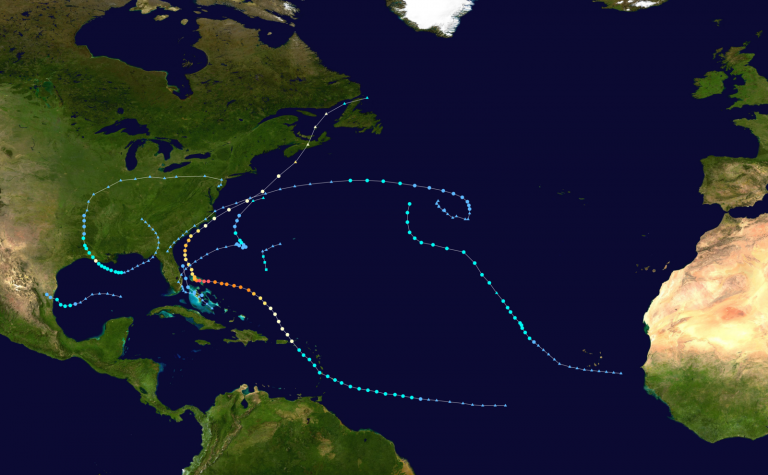Hurricane season peaks today
Today marks the statistical peak of the Atlantic hurricane season.

2019 Atlantic hurricane season summary map as of Sept. 10. (Image: wikipedia.org)
Today marks the statistical peak of the Atlantic hurricane season.
According to NOAA, historical data indicates that Sept. 10 is the day when tropical system activity is most likely to be occurring in the Atlantic basin due to favorable conditions (warm sea surface temperatures, moist air, and low wind shear).
As of today, the season has generated one subtropical storm, four tropical storms, and two hurricanes (including one major, Dorian), causing $8 billion in estimated damage, with the vast majority attributable to Dorian, according to early government estimates.
Last month, an update to an April report issued by Colorado State University anticipated 14 named storms, including seven hurricanes and two major hurricanes, or cyclones that reach Category 3 strength or higher on the Saffir-Simpson Hurricane Wind Scale.
An average season produces 12 named storms of which six become hurricanes, including three major hurricanes.
Some Atlantic basin seasons feature below average activity but still result in a devastating storm, like Hurricane Andrew in 1992, while others like 2010 — third most active season on record — did not feature a hurricane making landfall.
“Coastal residents are reminded that it only takes one hurricane making landfall to make it an active season for them, and they need to prepare the same for every season, regardless of how much activity is predicted,” according to the Colorado State University outlook.
The 2019 Atlantic basin hurricane season began on June 1 and continues through November 30. Upcoming names include Humberto, Imelda, Jerry, Karen, Lorenzo, Melissa, Nestor, Olga, Pablo, Rebekah, Sebastien, Tanya, Van, and Wendy.
The National Hurricane Center is currently monitoring three areas of possible development throughout the Atlantic tropical region, although all have a “low risk” of forming.
The New Jersey Office of Emergency Management offers a hurricane survival guide.
WHYY is your source for fact-based, in-depth journalism and information. As a nonprofit organization, we rely on financial support from readers like you. Please give today.




